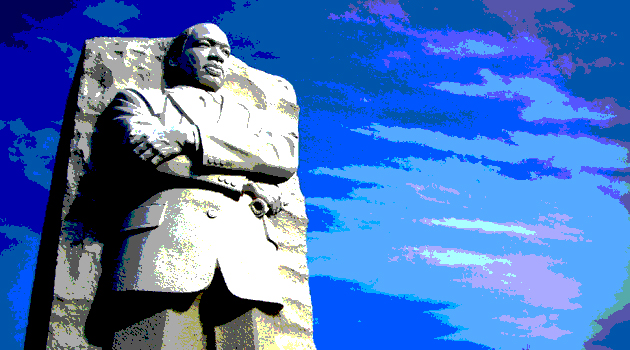Most people don’t spend an hour in the morning trying to pick out which coloring page they are going to take to work that day. Of the people who do, most are teachers. But with teachers, most have Martin Luther King Day off.
I didn’t—because I teach at a private preschool.
That morning I spent time trying to find the right picture of Martin Luther King Jr. for the kids to color. I was looking for something that portrayed him well, and that might occupy a four-year-old for ten to fifteen minutes. The fact that I’m trained in art also complicated the process, I’m sure.
After finding that glorious page, I drove relatively traffic-free streets. I didn’t have to slow in the normal places for school zones. The weather was nice, with no trouble on the horizon.
After the kids colored the picture, I taught them about Martin Luther King, a man I consider to be one of the great American heroes. I wanted the children to understand why he has a day in his honor. I wanted them to understand King’s message and why that message is so important, but I realized they are only four.
My dilemma was how to bring it down to their level. I did my best by reducing his message to three basic points.
First, be nice to people who look different than you.
Second, be nice to people who are different than you.
Third, be nice to people who have different opinions than you.
This last one took some explaining, as children at this age don’t really know what an opinion is. I had to wing an exercise to explain opinions, and how they related to Dr. King’s message.
I asked how many of them liked broccoli. (Some of them actually did.)
I asked those who did if it was okay for them to say how delicious broccoli is. (Of course it is.)
I asked those who didn’t if it was okay for them to say how yucky broccoli is. (This is okay too.)
I asked them if we could still be nice to one another, and be friends, even if we had different opinions about broccoli.
The interesting thing about this exercise is that four-year-olds know the right answer to these questions. I didn’t have to prompt them with answers. I don’t feel the questions are steering them any sort of way. They simply knew what was right.
Dr. King said, “The time is always right to do what is right.” If you haven’t learned to be nice to everyone, that you need to accept people as they are, if you still need a lesson in common decency, I ask that you listen to these children. Sometimes the greatest answers come out of the mouths of babes.
One of the kids asked me if Martin King was still alive. I told the class that he was killed. The children had various responses, but the one that stood out to me was: “They killed him because they didn’t listen when he told them to be nice.” He’s right.
One of the things we didn’t discuss in this class was what “nice” means, mostly because the children in my classes have a basic and pure understanding of being nice. For those of us who have outgrown the childish definition of nice, let me clarify: being nice doesn’t mean putting on a smile and tolerating someone. It is not merely being civil. Nice, the way the children understand it, is being good to each other, truly treating people the way they deserve to be treated.
So I’m putting it out there, please be nice to each other. The world needs more nice.
 Reggie Carlisle finished his BA in Creative Writing at Weber State University in 2014. His first published story was in the Fall 2013 Mixitini Matrix. He recently published poetry in the Clockwork Kiru Anthology. He resides in Utah with his wife and five daughters.
Reggie Carlisle finished his BA in Creative Writing at Weber State University in 2014. His first published story was in the Fall 2013 Mixitini Matrix. He recently published poetry in the Clockwork Kiru Anthology. He resides in Utah with his wife and five daughters.


Bush center: NWO CIA HQ